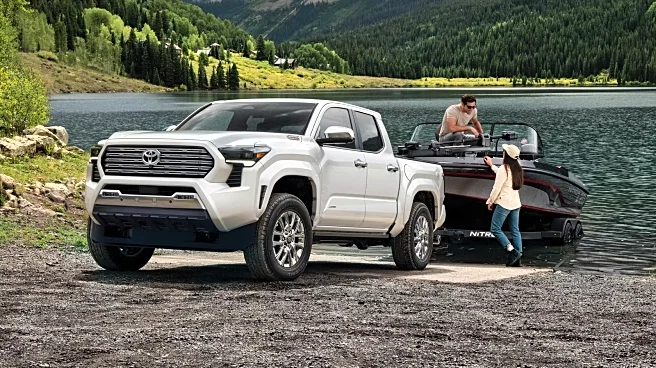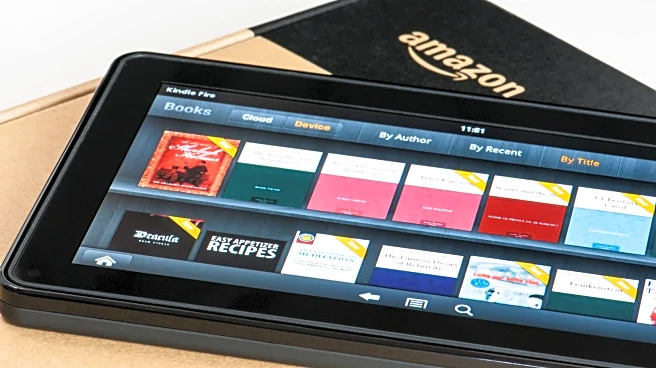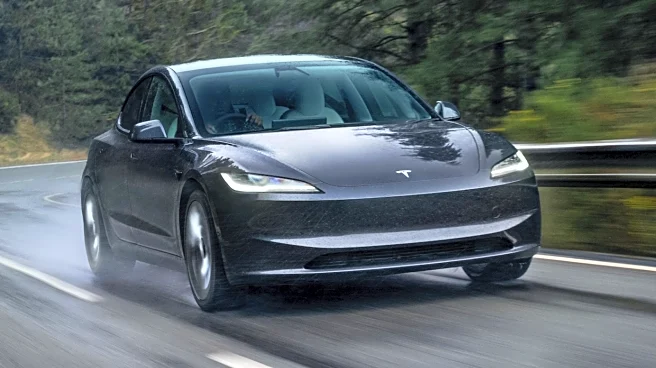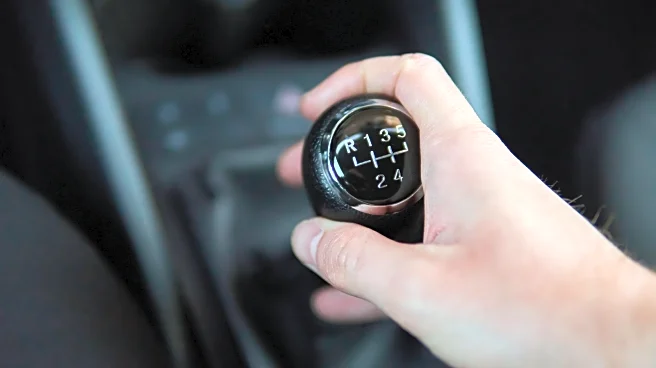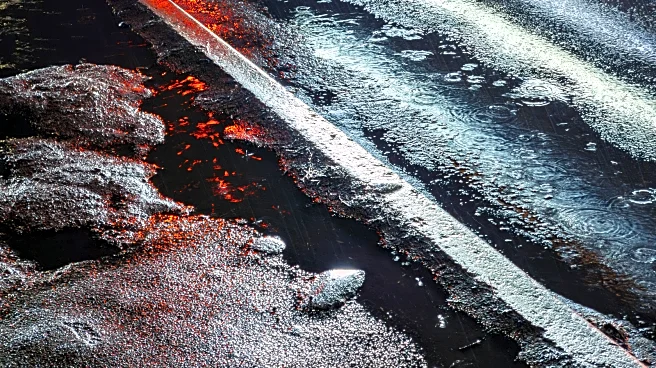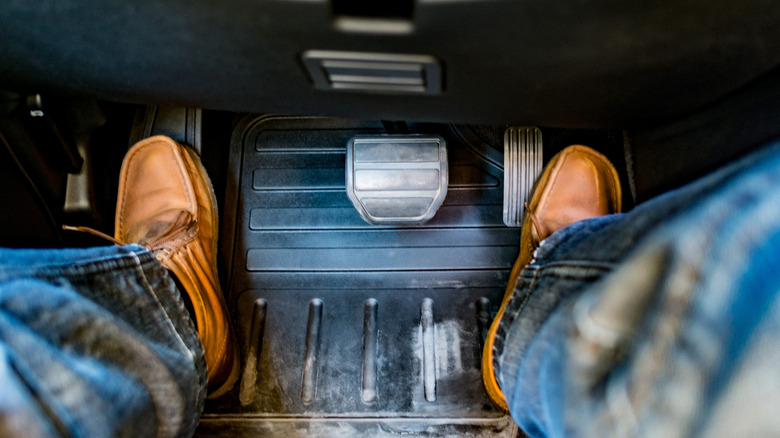
Engine braking isn't some secret technique reserved for manual drivers. Fundamentally, it's simply easing off the throttle and letting the engine's internal resistance help slow down your car. When you take your foot off the throttle, the air intake valve shuts, creating a vacuum, airflow into the engine drops, leaving you with no power to push you forward. That drag from an engine running, but not really producing any power? That's engine braking.
In manual cars, it's more obvious: every time you
shift a gear down, the revs increase, and you feel the deceleration kick in. As surprising as it may be for some, things aren't much different for automatics either. The principle behind engine braking barely has much to do with the type of transmission, especially since most modern automatics offer some level of manual gear-shifting control; often via paddle shifters, a sport mode, or a gear marked "L" or "S."
Once you learn when to downshift, you'll feel the engine respond the same way it does in a stick shift. Doing so can help keep your speed in check, and sometimes you may not even need to step on the brakes at all to do that. Unlike pedal braking, it's smoother, more controlled, and allows you get the most out of a feature your car already has, and one many drivers don't even know exists to begin with.
Read more: 6 Ways To Use Your Car's Tow Hitch (Besides Towing)
Engine Braking, Your Brake Pads' Best Friend
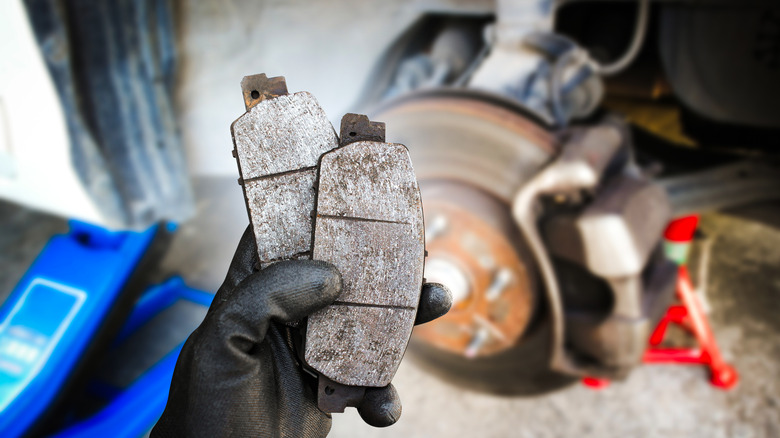
Brake pads are bound to wear out at some point, considering the amount of friction they deal with. However, how fast they wear comes down to your driving habits and how often you step on that pedal. By relying on your brakes to slow down every time you go down a hill or get caught up in stop-and-go traffic, you encourage heat to build up within your brake components, including the pads. Prolonged exposure to this heat is what wears them out.
That's where engine braking can come in handy, letting the engine handle some of the deceleration, and in doing so, reducing the amount of work your brake pads have to take on. It's quite simple: Less work means less friction, which, in turn, means less heat. For someone who often drives through hilly terrains, tows large loads, or drives through crazy city traffic, that can eventually lead to your pads lasting much longer.
Engine braking also helps avoid brake fade, which occurs when rotors and pads overheat (often due to prolonged use), leaving you with weaker braking force. That's dangerous, and not something you want to find out about when you're midway down a steep grade. Constantly replacing your pads and rotors isn't a cheap endeavor, especially if you're having to do it more often than you need to. Engine braking helps you stretch these service intervals, which can really pay off big in the long run.
When Engine Braking Helps (And When It Doesn't)
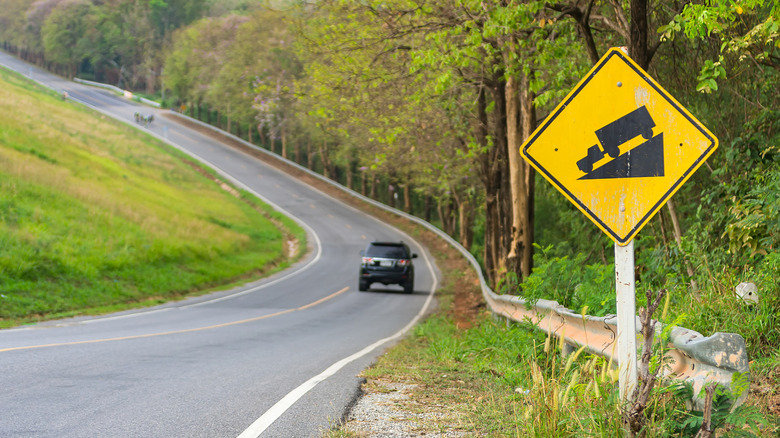
Engine braking is a technique, not some magic switch. Using it the right way is what makes all the difference, just like with anything else behind the wheel. Start with the basic applications: Cruising down a long descent, approaching slowing traffic (hopefully with some distance to spare) or approaching a mild turn. In any of these cases, engine braking can take the pressure off your brake pads and discs, and sometimes you may not even need to touch the pedal at all.
A quick, general rule of thumb? For automatics, downshift to whichever lower gears are available on your car before the engine momentum builds, not after; and not too early, either. Even so, especially when moving at a high speed, avoid abruptly shifting into a lower gear, as doing so can strain your transmission. Instead, pay attention to your RPMs before downshifting, then ease into it. If your engine starts screaming right after, you've likely downshifted too far.
Engine braking can also help avoid skidding, particularly during slippery conditions like snow or intense rain. However, avoid relying on it entirely, as slowing down (especially without brake lights) could catch other drivers behind you off guard. If used properly, engine braking is one of those underutilized habits that can make your driving smoother and safer, as well as set you apart from the average driver and self-proclaimed pros who still wear out their pads on every descent.
Want the latest in tech and auto trends? Subscribe to our free newsletter for the latest headlines, expert guides, and how-to tips, one email at a time.
Read the original article on SlashGear.
